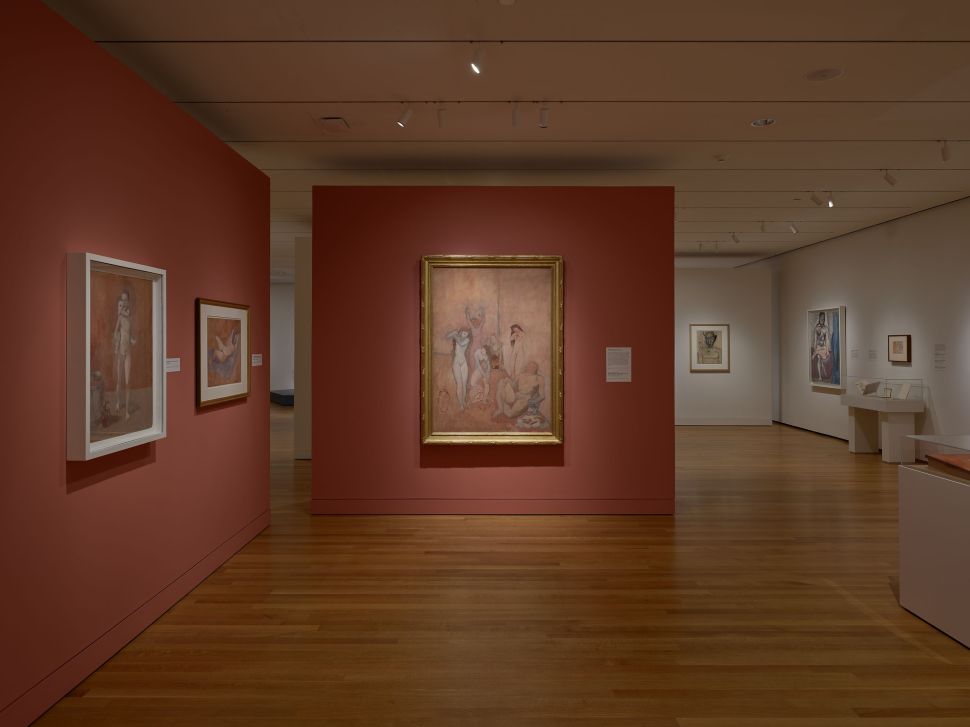Welcome to One Fine Show, where Observer highlights a recently opened exhibition at a museum not in New York City, a place we know and love that already receives plenty of attention.
Are we finally far enough from the insanity that was 2016-2024? Is it no longer dangerous to say that Pablo Picasso (1881-1973) was a good artist? I wouldn’t go so far as to say that I’ve never seen a bad show of his, but the oeuvre is so dense and varied that even exhibitions with an outré thesis tend to offer astounding examples. That one last year at Gagosian offered many bangers, despite being highly opinionated, aimed at reminding us of his radical politics and immigrant lifestyle. Yes, after seeing what we’ve done to the entertainment industry, in 2025 we might even be able to suggest that the painter of Guernica (1937) has the moral high ground when compared to a comedian on Netflix.
The focus of the Cleveland Museum of Art’s “Picasso and Paper” is not narrow, which means nearly every wall boasts a treasure. The show, which was organized in association with the Royal Academy of Arts, London, in partnership with the Musée National Picasso-Paris, features almost 300 works from across Picasso’s eight-decade career.
What comes to the fore with such a sample size is the artist’s respect for the medium. He listened to it, and it offered him a wild array of possibilities. This can be seen across the exhibition but even in just one work, Women at Their Toilette, which was created the same year as Guernica and shares its proportions but is made from cut wallpapers with gouache on paper pasted onto canvas. Picasso was a long way from Cubism and even the Demoiselles D’Avignon (1907), but this jangly textural piece feels like a personal retrospective for the way it blends those parts of his life. With its everyday materials and Peeping Tom subject matter, it also feels like a rich and quotidian love story. It should be noted that this was a time when the women in his life included his wife Olga Khokhlova, his mistress Marie-Thérèse Walter and Dora Maar. Juggling that many people probably feels like making a collage!
That work comes from the Musée National Picasso, but a surprising number of other pieces in the show come from the Cleveland Museum of Art’s own impressive collection. Some of my favorites in the show are his Rose Period sketches and watercolors of women, particularly his studies for The Harem (1906), which is also in the collection. As in Toilette, these women are realistic but still goddesses, their superior quality highlighted in the finished product by a buff but lazy-looking john in the foreground. He’s definitely not the harem’s local eunuch, but he might as well be as he gazes up at them leaning against a wall—a completely different and lesser species.
SEE ALSO: Artist Melike Kara Confronts the Multiplicity in Motherhood in Her Debut Show at Bortolami
These works are about how creepy it is to look at an object of romantic affection as much as they are about how fun it is, which I think most reasonable people understand. Paper was where Picasso liked to riff on common themes, like the one where he’s a beast about to kidnap a lady. Paper allows one to work shaggy.
I was smitten with the lithograph versions of his Les Femmes d’Alger (1955)—Picasso would make a print, complicate the plate and then make another print and further distort the plate. The later prints are unrecognizable. Very few artists make such experimental work today, and not for reasons of political correctness. It’s more that art has become, on every level, too precious.
“Picasso and Paper” is on view at the Cleveland Museum of Art through March 23.

